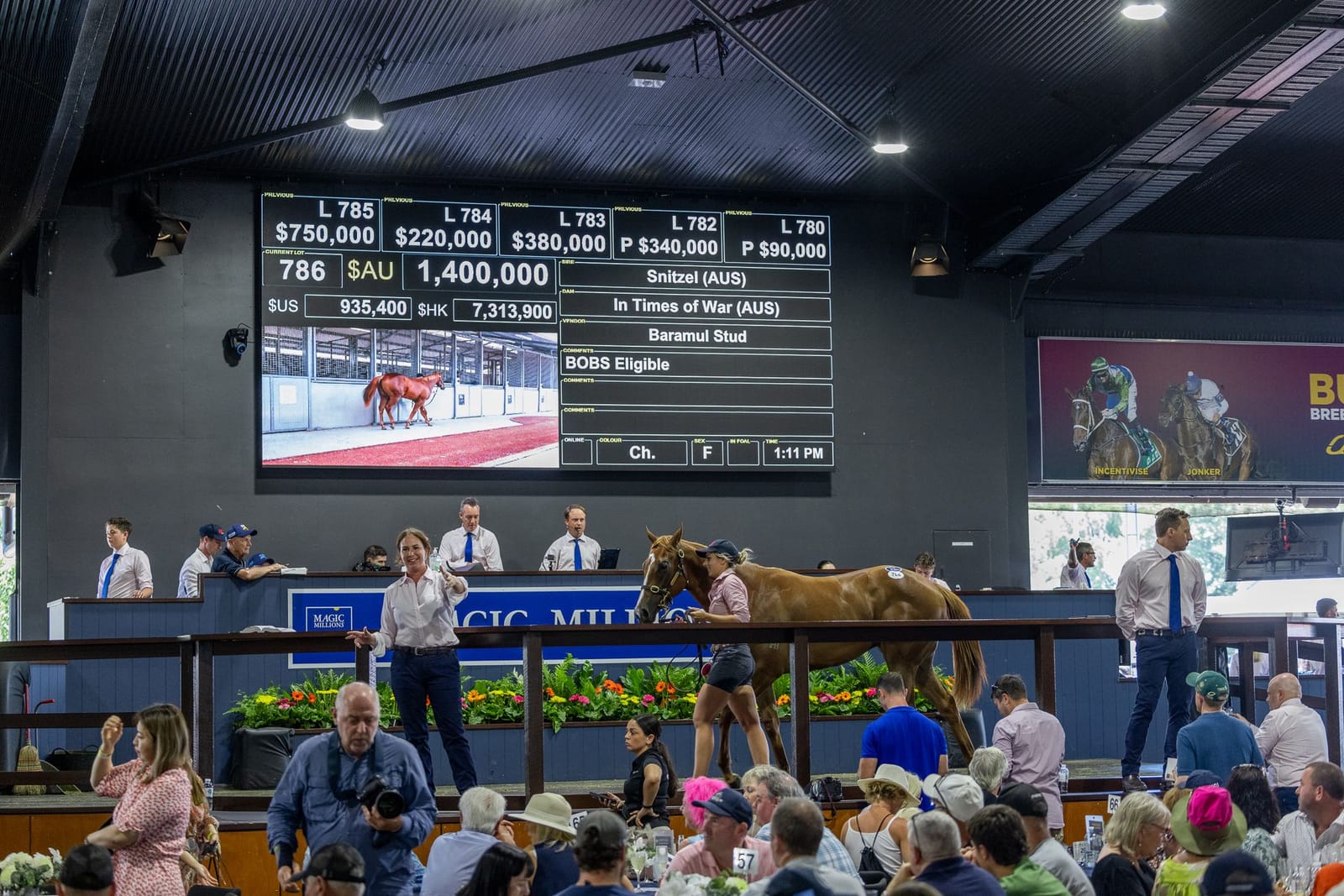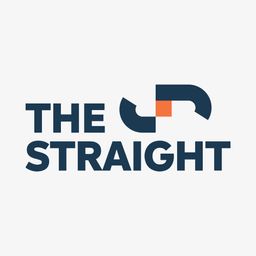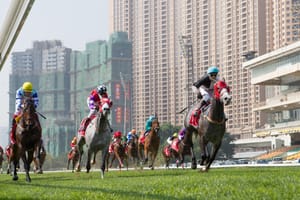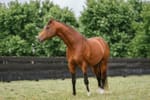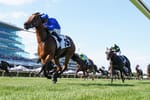When a yearling sale’s key metrics improve every year for a decade, as has happened with the Magic Millions, there is always a bit of a sharp breath when the market eventually turns, even by the smallest amount.
There was an element of trepidation on Saturday night as managing director Barry Bowditch, who had overseen five straight years of growth, had to front the bloodstock press pack to talk about a sale which, while it had met expectations, had failed the heady standards of recent years.
The final stats on Book 1 of the sale saw the average price of a yearling drop by 4.6 per cent to $277,941, while overall spend was down 2,7 per cent to $224 million. To give that some historical context, it was the third-highest gross and average in the 38-year history of the sale.
It was far from disastrous. Indeed, given the broader economic circumstances, it was quite positive, although with some interesting quirks which ask a few questions about where the yearling market might end up in 2024.
The first notable aspect is that the health of the top end of the market remains intact. There were 23 million-dollar lots on the Gold Coast in 2024, more than any other year, and a jump of three from last year.
However, it is the level below that where we see the first wrinkle in the market. The number of lots bought for $500,000 or more dropped significantly from 116 to 97, despite a slightly larger catalogue. That could be attributable to a perceived drop in quality, but more likely points to the conservatism of a key core of buyers.
Australia’s leading trainer of last year, Ciaron Maher, signed for 25 horses this year either in his own name or in partnership, spending $12.9 million. The average price of those horses was $369,286. Last year on the Gold Coast, Maher was involved in the purchase of 30 horses for a total of $13.9 million. The average price of those horses was $462,833.
The Newgate colts group, which also involves China Horse Club, Go Bloodstock and Trilogy Racing, has been another consistent buyer in that $500,000-plus range, but moderated its spend this year with $6.52 million, compared to $10.1 million last year. The average price of a yearling it purchased dropped from $561,111 to $543,333.
Chris Waller and Guy Mulcaster’s average price also dropped from $368,929 to $349,118, while horses bought in the name of Gai Waterhouse, Adrian Bott and their bloodstock partner Kestrel Thoroughbreds also fell on average from $378,810 to $370,435.
Where averages did increase for these trainers were in the horses they bought in partnership with others. Put simply, buyers partnered up before the sale to reduce risks, rather than buying on spec and trying to sell down later.
Magic Millions Book 1 stats
Leading syndicators also bought much more carefully. Dynamic Syndications purchased 10 yearlings at an average of $152,500, compared to 13 at $156,923 in 2023, Star Thoroughbreds secured nine at $237,222 compared to 11 at $263,636, while Darby Racing’s average spend was also down to $235,000 (nine) from $243,333 (six) last year.
Even Bennett Racing, who has enjoyed a great run, checked its average investment, down from $246,500 (10) in 2023 to $235,000 (six) this year.
Most of those are small falls, coming off a record market in 2022 and 2023, but do paint a picture of more considered investment.
Another example of this is the reduction in investment from the two biggest states. Overall spending across NSW and Victoria dropped some 9 per cent. The average NSW-bought horse was 6.1 per cent cheaper than last year, while the average Victorian horses was 2.2 per cent lower.
Conversely, we also saw Queenslanders step up their investment, buying 24 per cent more Book 1 horses than they did last year, and spending 17.78 per cent more.
However, the average price the locals paid for their horses dropped by two per cent as they secured more value for money. There seems to be great confidence in the local product with 33 of the 96 horses Queenslanders purchased in Book 1, eligible for QTIS.
We also saw New Zealand investment jump sharply, thanks largely to Te Akau Racing and David Ellis, but with some added confidence from elsewhere.
The strong prizemoney boosts which have followed the Entain deal for the New Zealand TAB, plus the excellent results from the NZB Ready To Run Sale saw Kiwis buy seven more horses and spend 49 per cent more than they did on the Gold Coast last year.
That’s a good pointer towards the next major Australasian yearling sale at Karaka. It will have its own little ecosystem due to the prizemoney boost but the top end there will be interesting given Ellis spent so freely on the Gold Coast.
He has been the leading buyer at the NZB sales for the past 18 years, but we await to see if he has already secured his top-end yearlings for 2024.
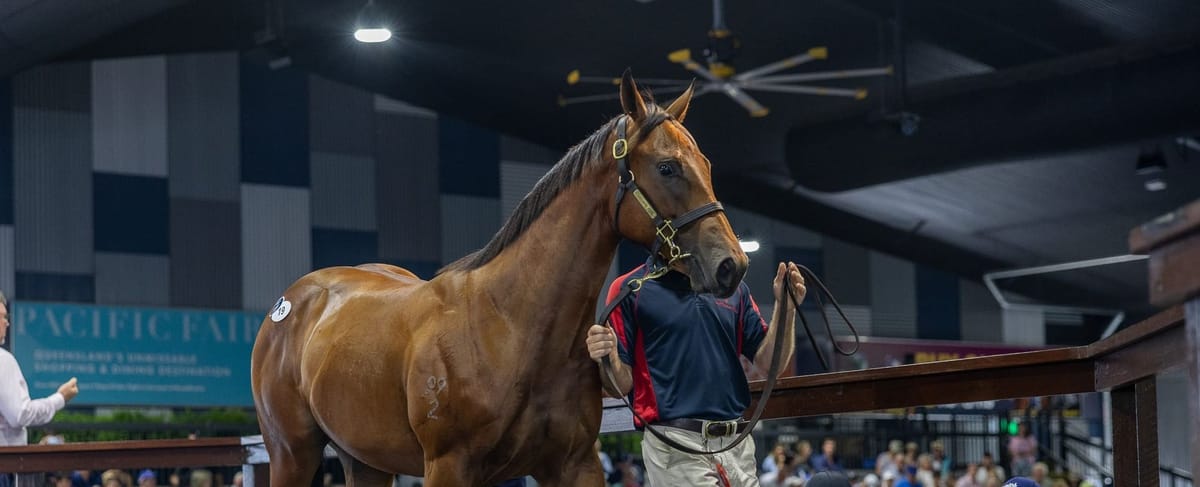
February’s Inglis Classic Sale is the next Australian yearling sale and that’s where we are going to see a truer picture of that trainer/syndicator market. Are they willing to shop in that more value-orientated market, or did they get their fill of orders already on the Gold Coast?
The Inglis Premier Sale in Victoria is similar as well as being a bit of a referendum of how racing in that state is performing in light of uncertainty around future prizemoney levels being sustained and the performance of Racing Victoria.
Then we get to Easter, which you will recall last year, felt the pinch more than what the Gold Coast did. A lot can happen between now and then, but given the $500,000-$1 million market that was soft at Magic Millions is very much Inglis’ target, there is a bit of work to do to re-energise the buying habits of those mid to high-end buyers.

